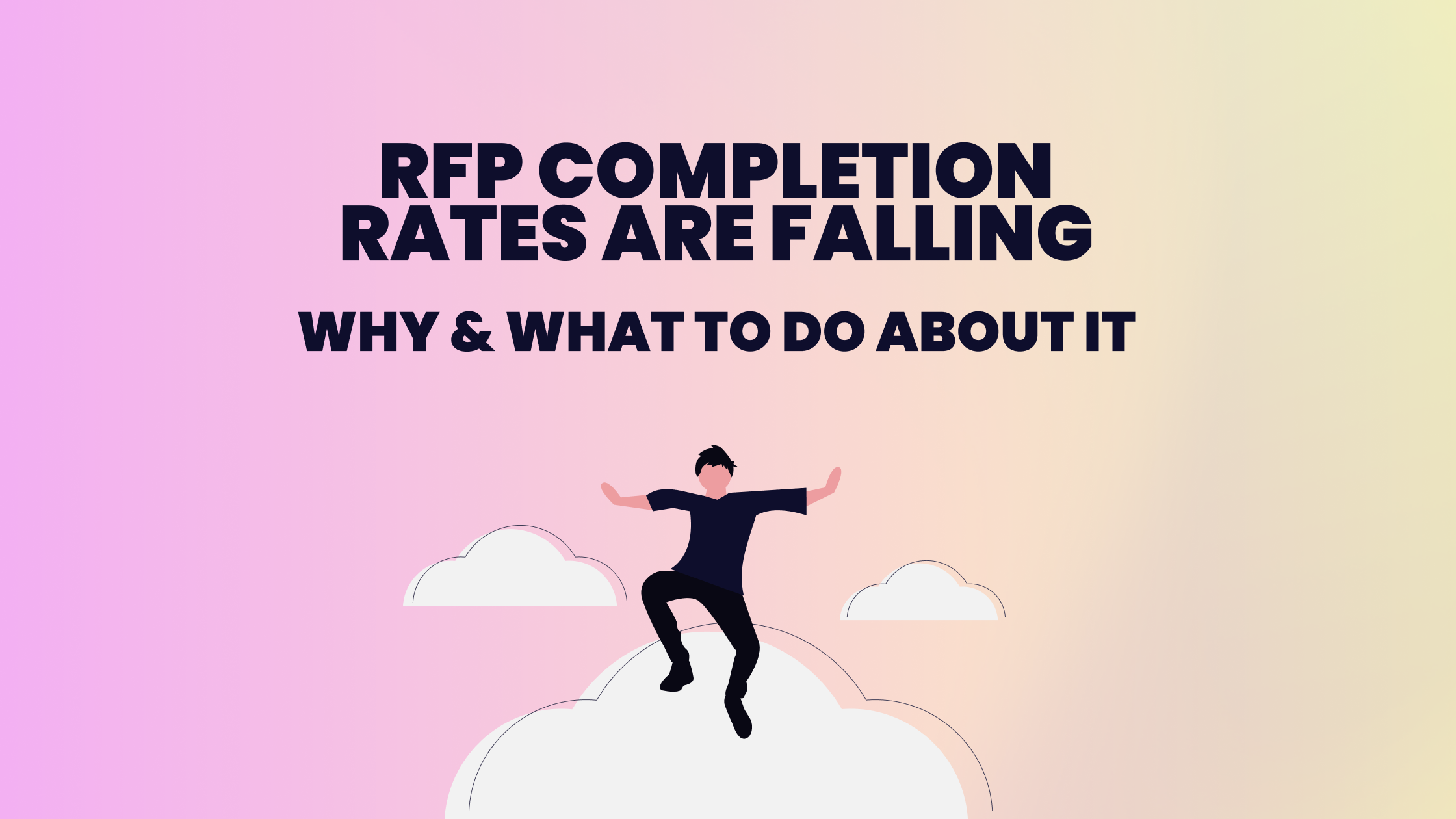Procurement processes are evolving, and organizations are under pressure to evaluate vendors more quickly, accurately, and collaboratively. That’s where RFx Management comes in. By organizing and optimizing Requests for Information (RFIs), Requests for Proposals (RFPs), and Requests for Quotations (RFQs), companies can reduce costs, mitigate risk, and accelerate time-to-value.
Who is this for?
If you’re a procurement lead or risk manager at a mid-to-enterprise B2B company struggling with manual, fragmented RFx processes, this guide will help you automate vendor selection, align stakeholders, and reduce risk in RFI, RFP, and RFQ workflows.
What is RFx Management?
RFx Management refers to the structured process of creating, issuing, tracking, and evaluating RFIs, RFPs, and RFQs during vendor selection and procurement. The “x” in RFx stands for the variable nature of the request type; whether you need information, a proposal, or a quote. Effective RFx management ensures that every vendor engagement is fair, standardized, and aligned with business goals.
It spans:
- Collaborating across departments to define requirements
- Standardizing the format and criteria for vendor responses
- Tracking submissions and evaluations in one centralized system
- Making procurement decisions based on consistent, auditable data
Understanding the RFx Framework in Procurement
What RFx Means: RFI, RFP, RFQ Explained
- RFI (Request for Information): Used to gather insights about the market or a vendor’s capabilities before defining a project.
- RFP (Request for Proposal): Issued when a buyer has clear needs and wants vendors to propose solutions and pricing.
- RFQ (Request for Quotation): Sent when the product or service is well-defined, and the buyer wants specific pricing information.
When to Use Each RFx Type in the Buying Cycle
- RFI: Early in the process (when scoping the problem).
- RFP: Mid-stage (once you’ve defined the challenge and need proposals).
- RFQ: Final stage (ready to compare costs and finalize selection).
Step-by-Step Breakdown of the RFx Process
Step 1: Define Business Requirements Across Teams
Gather input from stakeholders (e.g., legal, IT, finance) to build a complete picture of what’s needed from a vendor.
Step 2: Draft and Issue the Right RFx Document
Choose the right format (RFI, RFP, or RFQ) and ensure it’s clear, complete, and aligned with internal priorities.
Step 3: Collect and Evaluate Vendor Responses
Centralize incoming responses and score them against predefined evaluation criteria to ensure fairness.
Step 4: Select the Best-Fit Vendor
Shortlist vendors, run clarification rounds, and identify the supplier who meets both your requirements and risk tolerance.
Step 5: Finalize and Negotiate the Contract
Use the data and scoring to justify decisions during contract negotiations, and build in SLAs and performance metrics.
Common Challenges in Manual RFx Management
Spreadsheet Overload and Email Chaos
Juggling spreadsheets and emails leads to errors, missed deadlines, and duplicated work.
Inconsistent Vendor Evaluation Criteria
Without standardized templates and scoring, vendor selection can become biased or subjective.
Lack of Audit Trails and Documentation
It’s difficult to trace decisions or provide procurement documentation for compliance audits.
How Automation Improves the RFx Process
Reducing Cycle Time with Workflow Automation
Modern tools streamline reviews, reminders, and scoring; cutting response and decision time in half.
Centralizing Communication and Document Sharing
A single platform ensures vendors, stakeholders, and procurement teams all work from the same source of truth.
Improving Collaboration with Internal Stakeholders
With real-time access and version control, everyone can contribute without stepping on each other’s toes.
Integrating Risk Management into RFx Workflows
Using Vendor Risk Questionnaires in RFPs
Embed due diligence early by asking vendors about security, privacy, and compliance posture.
Validating Vendor Claims with External Intelligence
Tools like security ratings and public compliance data help verify what vendors say.
Aligning RFx with Third-Party Risk Management (TPRM)
Ensure that your procurement process isn’t just efficient but also defensible and aligned with your broader risk framework.
Key Takeaways & Wrap Up
RFx Management helps organizations streamline procurement while building trust with vendors and stakeholders. When done well, it reduces risk, speeds up vendor selection, and improves alignment across departments.
- RFx stands for RFI, RFP, and RFQ, each used at a different stage in procurement.
- A structured RFx process improves consistency, transparency, and efficiency.
- Manual RFx processes often suffer from poor collaboration, inconsistent evaluation, and lack of auditability.
- Automation transforms RFx from a chaotic task to a strategic advantage.
- Integrating risk management strengthens compliance and decision-making.
RFx Management - FAQs
What does RFx stand for in procurement?
RFx is a collective term for procurement documents like RFI (Request for Information), RFP (Request for Proposal), and RFQ (Request for Quotation). Each is used at different stages of the vendor selection process.
What is the purpose of RFx management software?
RFx management software helps streamline and automate the process of issuing, tracking, and evaluating RFI, RFP, and RFQ responses; reducing manual work and improving transparency and decision-making.
When should I use an RFI vs. RFP vs. RFQ?
Use an RFI during early research, an RFP when seeking detailed proposals, and an RFQ when you need exact pricing for a clearly defined product or service.
What are the benefits of automating RFx processes?
Automation speeds up cycle times, centralizes communication, standardizes evaluation criteria, and ensures better collaboration across teams.
Can RFx management help with vendor risk assessment?
Yes. You can embed risk questionnaires into RFPs and validate vendor claims using external intelligence, making RFx a key part of third-party risk management.
What types of teams typically use RFx management tools?
Procurement, finance, legal, security, and IT teams often collaborate in RFx tools to align on requirements, evaluate vendors, and manage compliance.
Is RFx management only for large enterprises?
No. Companies of all sizes can benefit from RFx management, especially those scaling vendor operations or needing more structured procurement workflows.



